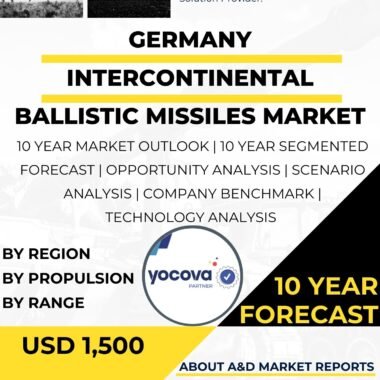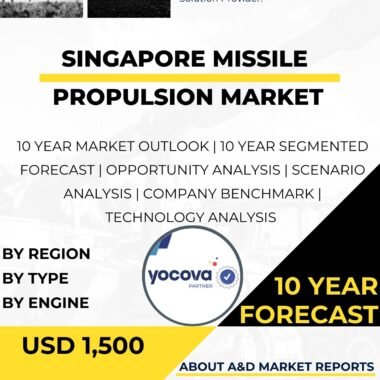Description
The China missile propulsion market has experienced substantial growth and development in recent years. With the country’s focus on enhancing its military capabilities and strengthening its defense industry, there has been a significant demand for advanced missile propulsion technologies. This market analysis provides an overview of the China missile propulsion market, including key players, market drivers, challenges, and future prospects.
The China missile propulsion market is characterized by a strong presence of domestic companies that have made significant contributions to the development and manufacturing of missile propulsion systems. Key players in the market include China Aerospace Science and Technology Corporation (CASC), China Aerospace Science and Industry Corporation (CASIC), and China Shipbuilding Industry Corporation (CSIC). These companies have been actively involved in research, development, and production of missile propulsion technologies.
The market is driven by several factors. One of the primary drivers is China’s pursuit of military modernization and self-sufficiency in defense capabilities. The country has placed a strong emphasis on developing indigenous missile technologies and reducing its reliance on foreign suppliers. As a result, there has been a significant investment in the development of advanced missile propulsion systems to enhance the range, speed, and accuracy of Chinese missiles.
Technological advancements have played a crucial role in the growth of the China missile propulsion market. Domestic companies have focused on developing innovative propulsion technologies, including solid propellant rockets, liquid-fueled engines, and hybrid propulsion systems. These advancements have led to improved missile performance, increased range, and enhanced maneuverability.
China has made notable progress in the development of solid propellant rockets, which offer advantages such as high energy density, simplicity, and ease of storage and handling. The successful development and deployment of solid-fueled missiles, such as the DF-21 and DF-26, have showcased China’s capabilities in this area. Additionally, research and development efforts have focused on developing more advanced solid propellants to further improve missile performance.
Liquid-fueled engines have also been a focus of development in the China missile propulsion market. These engines offer advantages in terms of thrust control, longer burn times, and the ability to restart. China has successfully developed liquid-fueled engines for various missile systems, including intercontinental ballistic missiles (ICBMs) and space launch vehicles. The development of advanced liquid-fueled engines, such as the YF-100 and YF-120, has significantly enhanced the capabilities of Chinese missiles.
Hybrid propulsion systems, which combine the advantages of solid and liquid propulsion technologies, have also gained attention in the market. These systems offer the flexibility of liquid propellants with the simplicity and reliability of solid propellants. China has made progress in developing hybrid propulsion systems for missiles, such as the DF-31 and DF-41, which are capable of delivering nuclear payloads over long distances.
Despite the positive growth trajectory, the China missile propulsion market also faces certain challenges. One of the primary challenges is the need for continuous research and development to keep pace with evolving missile technologies. As adversaries develop more advanced propulsion systems, China must invest in innovation and advanced manufacturing techniques to maintain its technological edge.
Additionally, the market faces challenges related to international export restrictions and intellectual property rights. The development and export of missile propulsion technologies are subject to strict regulations due to security concerns. This can limit market opportunities and hinder collaboration with international partners.
Looking ahead, the future prospects for the China missile propulsion market are promising. China’s commitment to military modernization and technological self-sufficiency will continue to drive investments in missile propulsion technologies. Ongoing research and development efforts, collaborations between domestic companies and international partners, and the integration of emerging technologies are expected to result in the introduction of more advanced and capable missile propulsion systems.
The integration of advanced materials, such as carbon fiber composites, additive manufacturing techniques, and advanced manufacturing processes, will play a crucial role in enhancing the performance and efficiency of missile propulsion systems. Additionally, the integration of electric and hypersonic propulsion technologies may shape the future of the market, enabling faster, more agile, and more precise missile systems.
In conclusion, the China missile propulsion market has witnessed significant growth driven by the country’s focus on military modernization and self-sufficiency in defense capabilities. Technological advancements, including the development of solid propellant rockets, liquid-fueled engines, and hybrid propulsion systems, have enhanced the performance and capabilities of Chinese missiles. However, challenges related to evolving missile technologies and export restrictions need to be addressed. With ongoing research and development, collaborations, and the integration of emerging technologies, the future of the China missile propulsion market looks promising, with opportunities for further growth, innovation, and advancements in missile propulsion systems.




